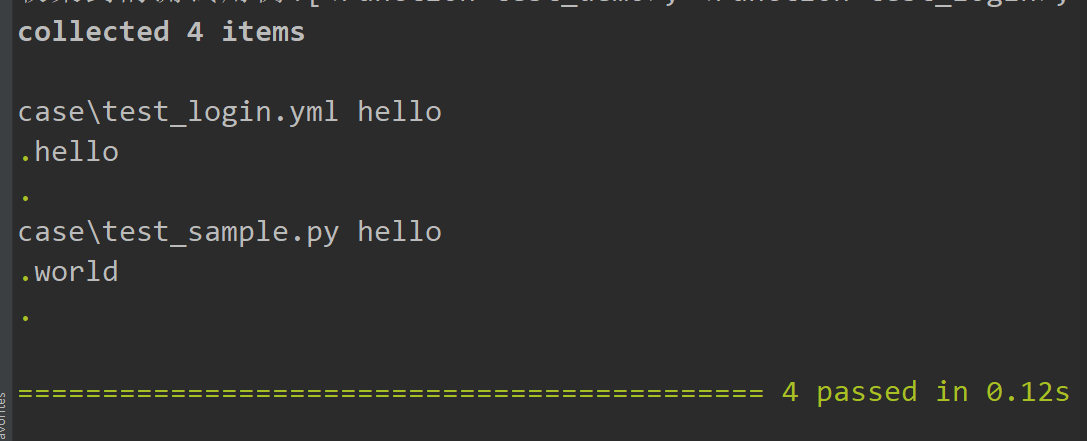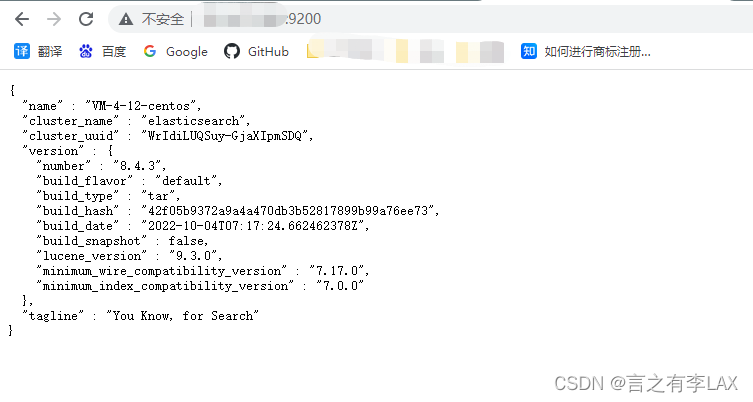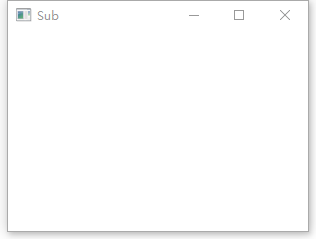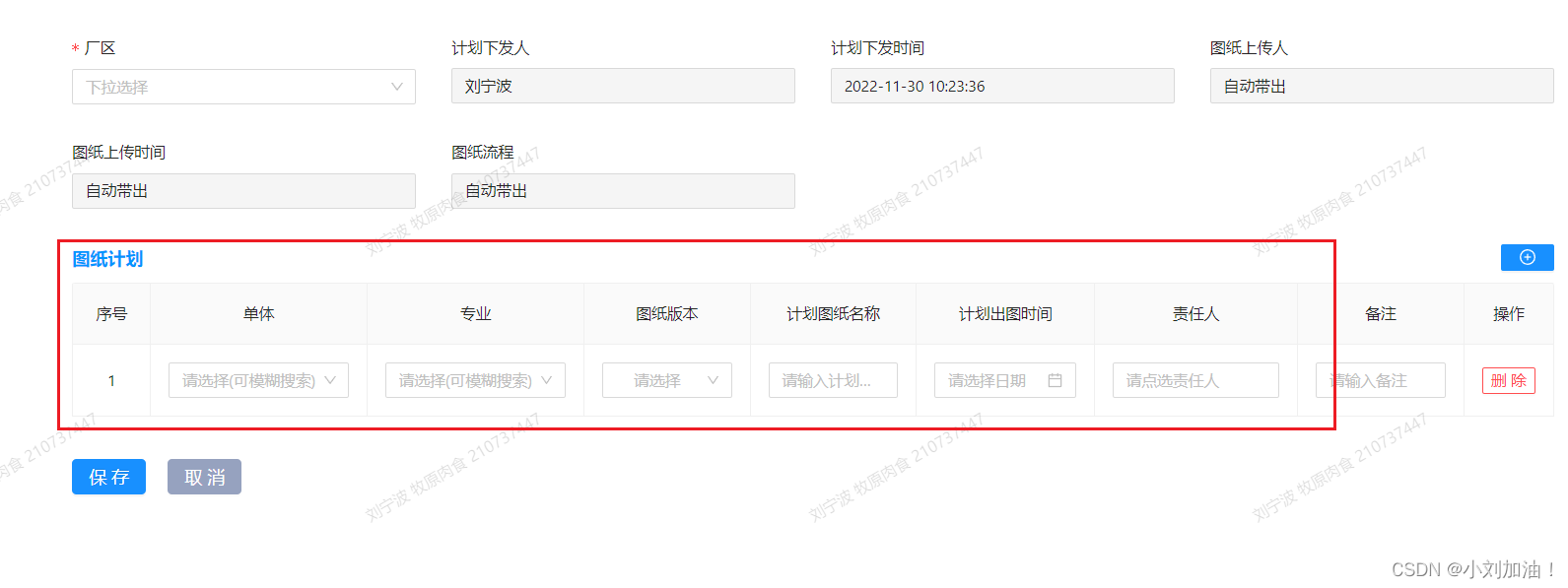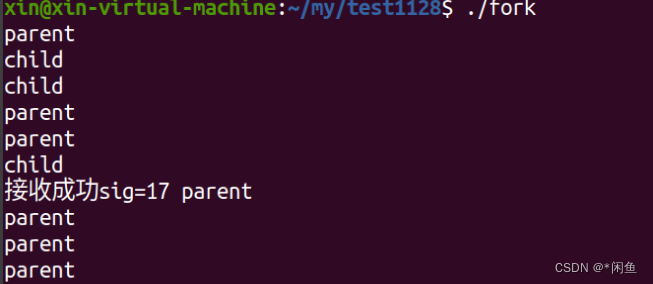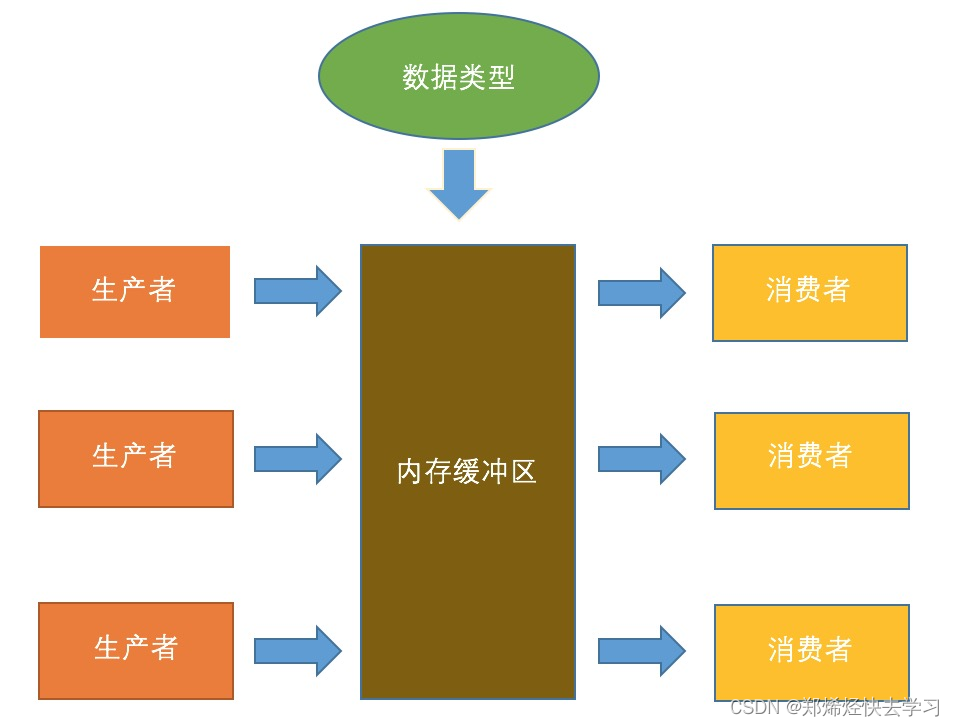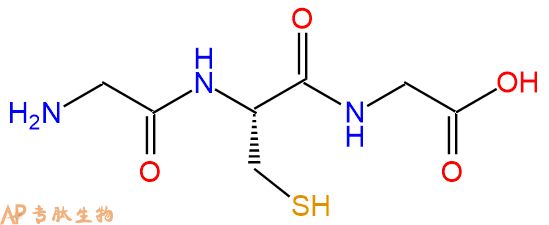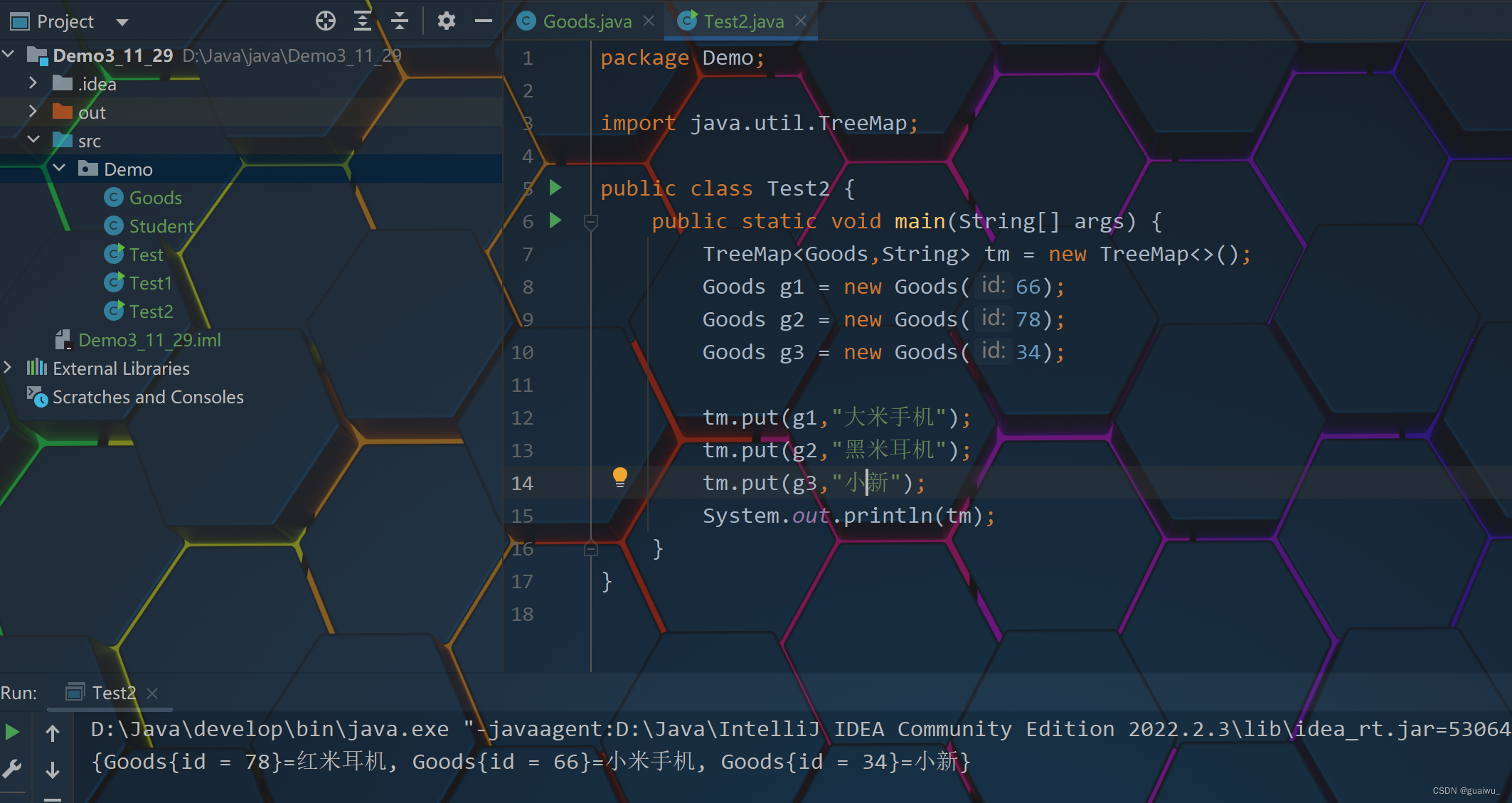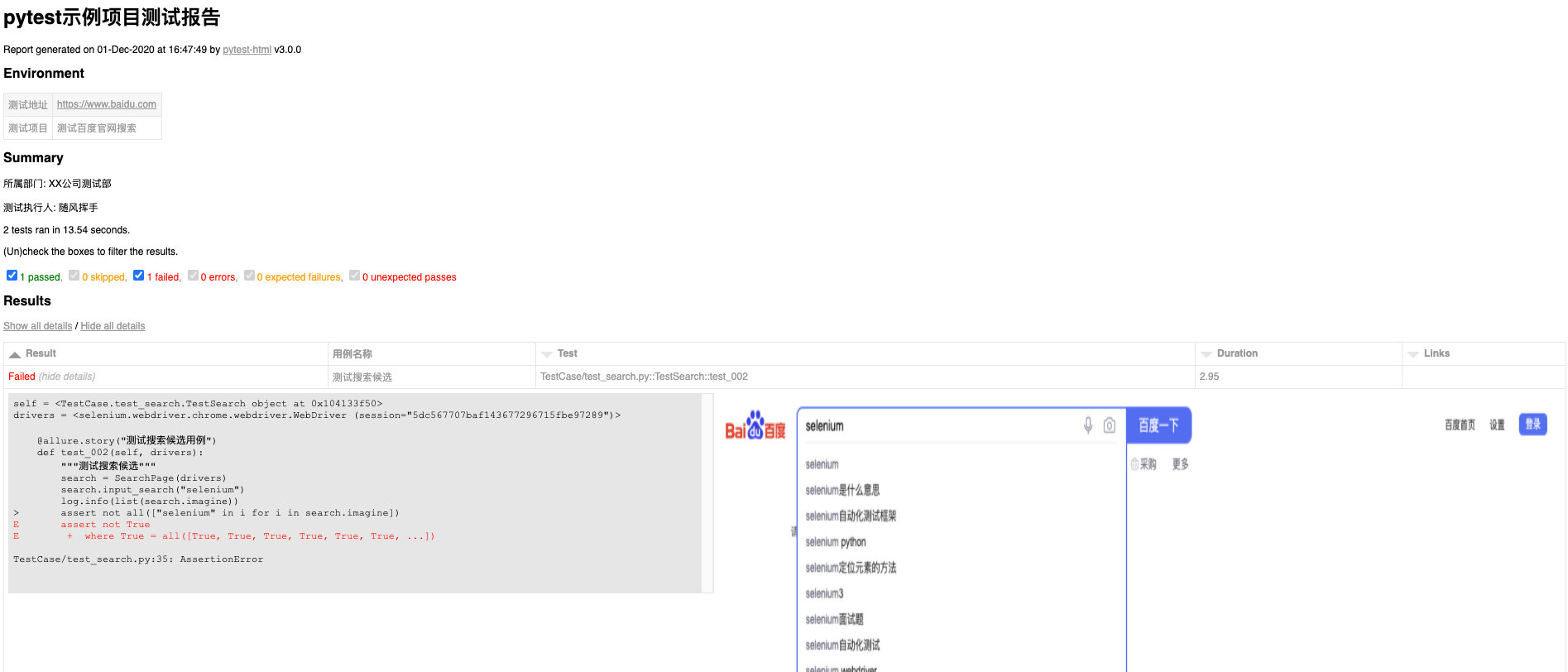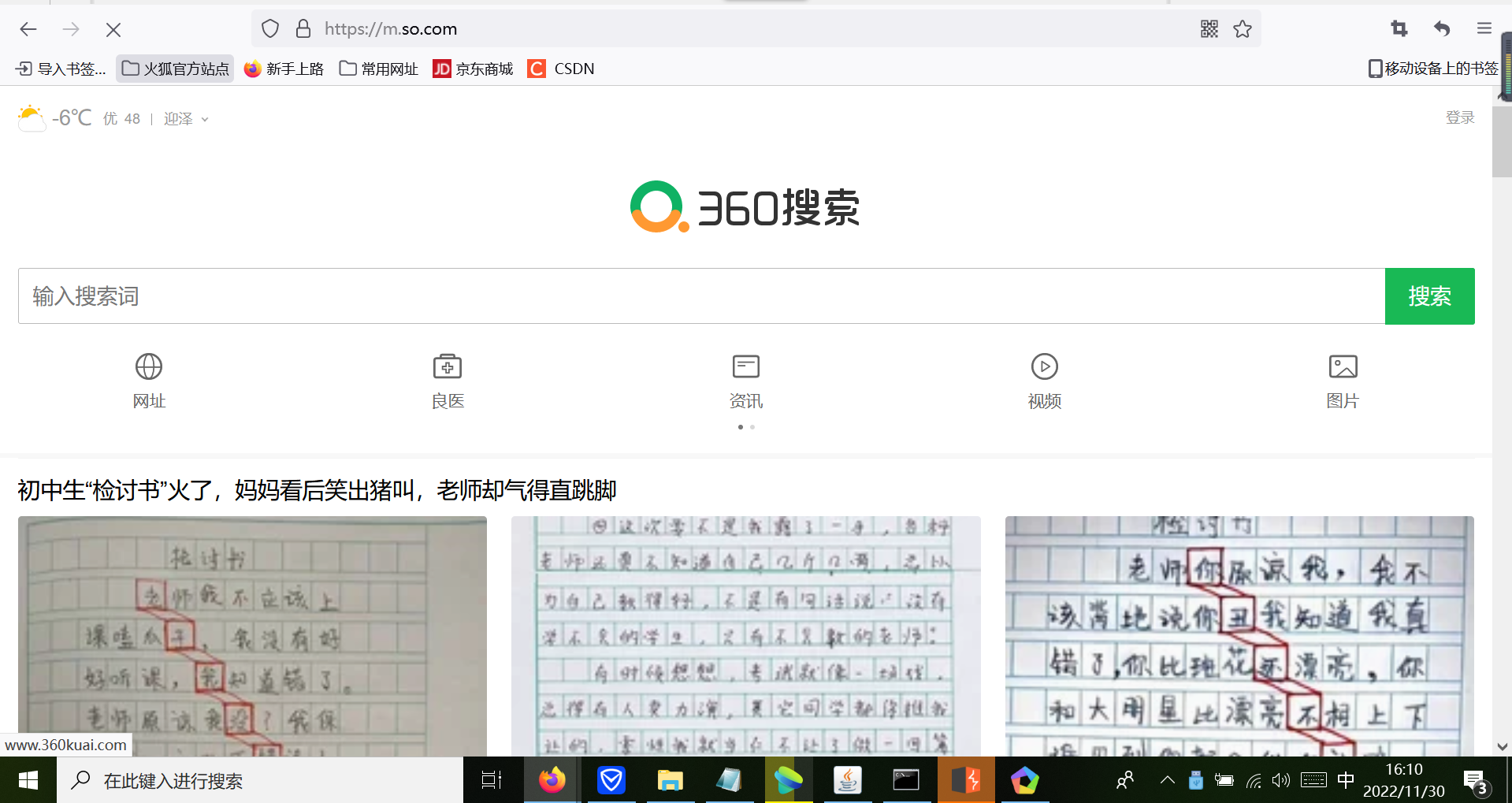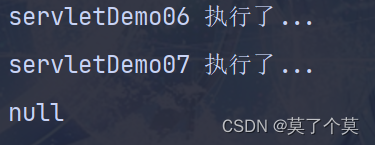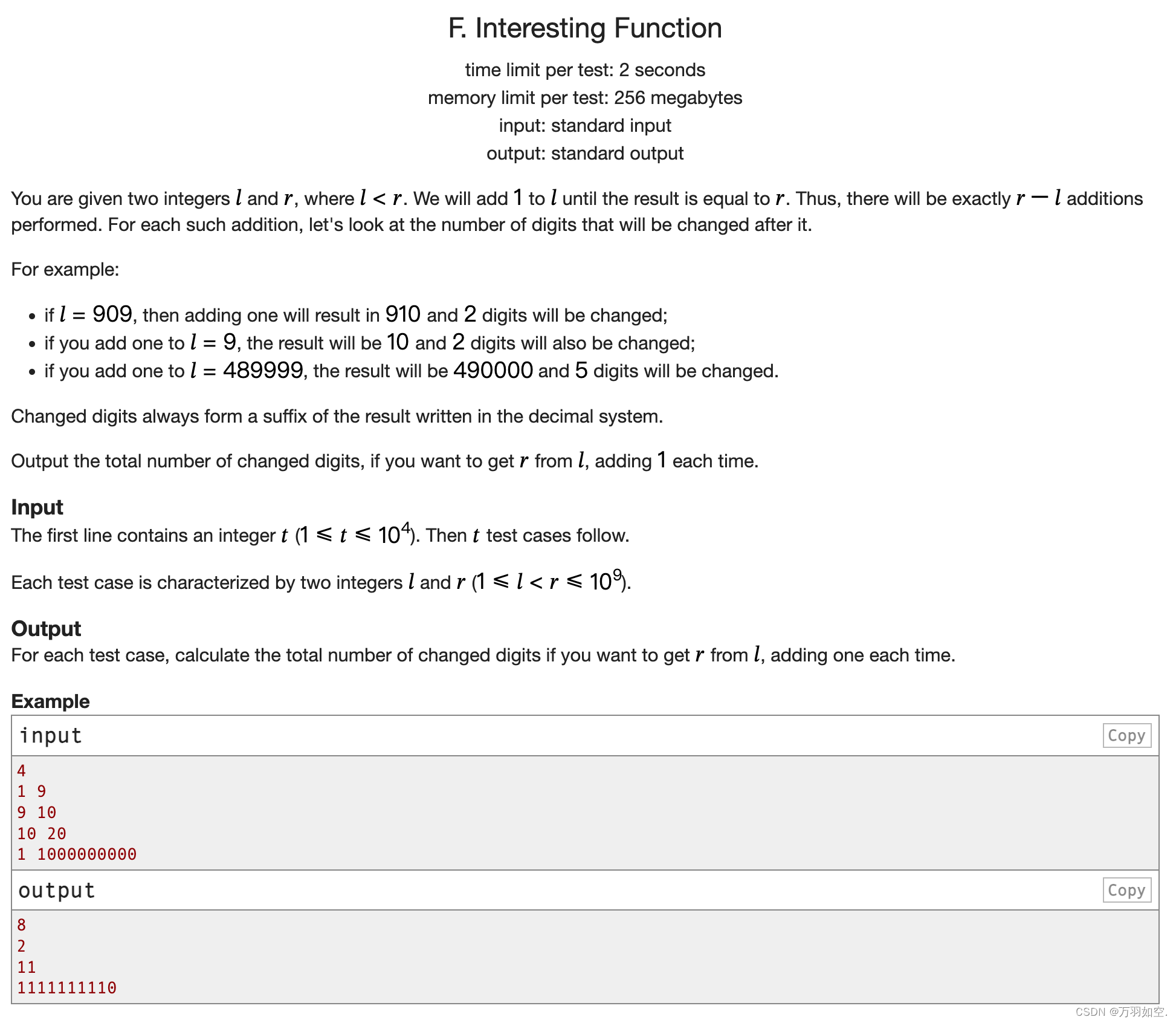
翻译:
给出两个整数𝑙和𝑟,其中𝑙<𝑟。我们将在𝑙上加1,直到结果等于𝑟。因此,执行的添加恰好是𝑟−𝑙。对于每一个这样的加法,让我们看看在它之后将被改变的位数。
例如:
如果𝑙=909,那么增加1将导致910和2位数字将改变;
如果你在𝑙=9上加1,结果将是10,2位数字也会改变;
如果在𝑙=489999中添加1,则结果将是490000,并且将更改5位数字。
更改后的数字总是构成十进制格式的结果的后缀。
如果想从𝑙得到𝑟,则输出更改的数字的总数,每次加1。
输入
第一行包含整数𝑡(1≤𝑡≤104)。然后是𝑡测试用例。
每个测试用例都有两个整数𝑙和𝑟(1≤𝑙<𝑟≤109)。
输出
对于每个测试用例,如果您想从𝑙得到𝑟,计算更改数字的总数,每次增加一个。
例子
inputCopy
4
1 9
9日10
10个20
1 1000000000
outputCopy
8
2
11
1111111110
思路:
改变的位数,首先我们每次操作,肯定都会改变一次,所以我们可以把初值直接当作r-l,这是个位数的变化,个位数的变化完了,接下来就是十位数,因为个位数的值已经全部拿到,所以没必要记录,我们可以直接/10,把十位当作个位,以此类推,累加就可以得出答案。
代码:
#include <iostream>
#include <algorithm>
#include <string.h>
#include <string>
#include <math.h>
#include <stdio.h>
#include<vector>
#include<queue>
#include<map>
#include<set>
#include<tuple>
#include<numeric>
#include<stack>
using namespace::std;
typedef long long ll;
int n,t;
inline __int128 read(){
__int128 x = 0, f = 1;
char ch = getchar();
while(ch < '0' || ch > '9'){
if(ch == '-')
f = -1;
ch = getchar();
}
while(ch >= '0' && ch <= '9'){
x = x * 10 + ch - '0';
ch = getchar();
}
return x * f;
}
inline void print(__int128 x){
if(x < 0){
putchar('-');
x = -x;
}
if(x > 9)
print(x / 10);
putchar(x % 10 + '0');
}
ll m,k;
void solv(){
cin>>m>>k;
ll ans=k-m;
for (int i =10; i<=1e9; i*=10) {
ans+=k/i-m/i;
}
printf("%lld\n",ans);
}
int main(){
ios::sync_with_stdio(false);
cin.tie(); cout.tie();
cin>>t;
while (t--) {
solv();
}
return 0;
}
